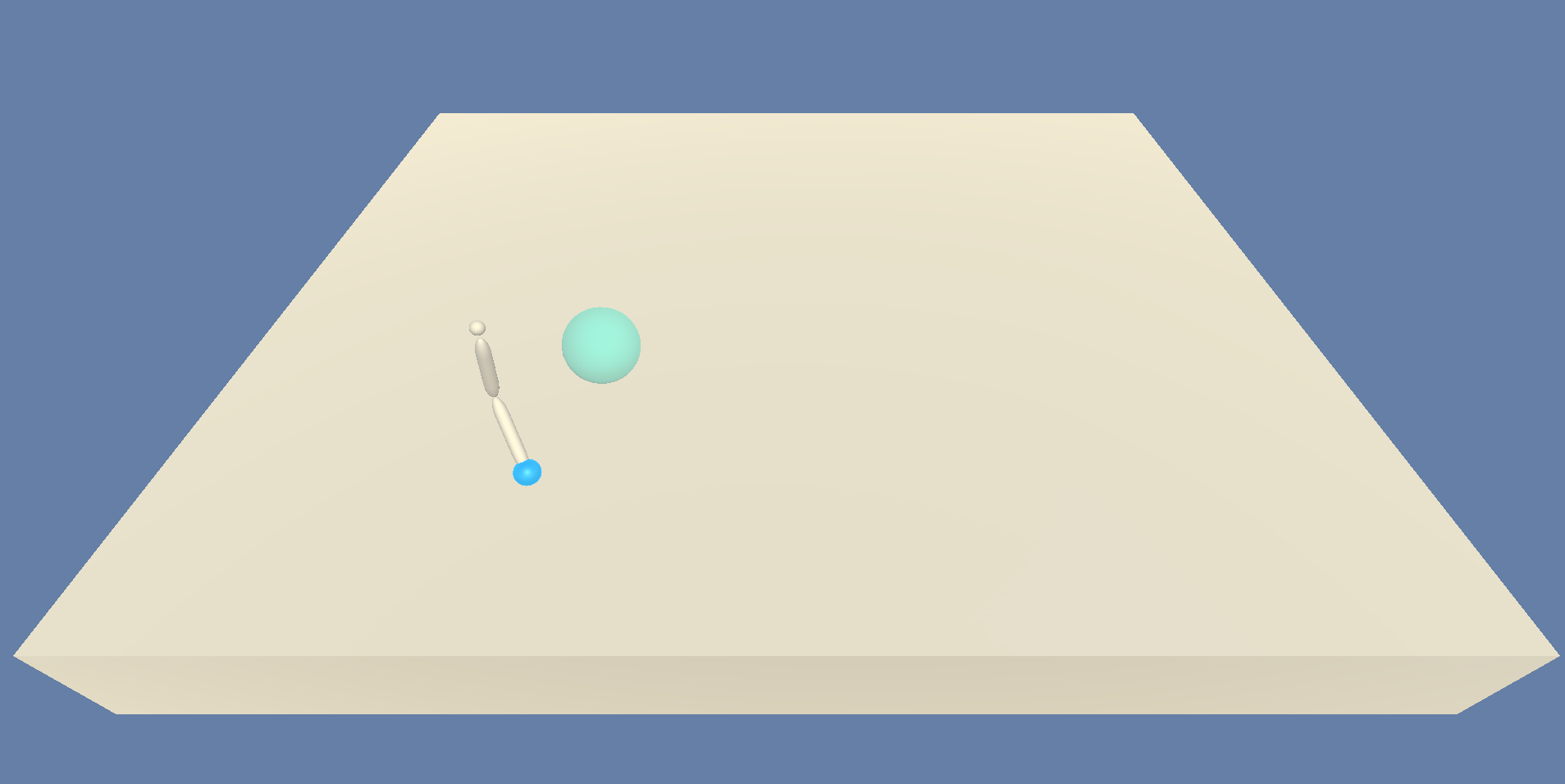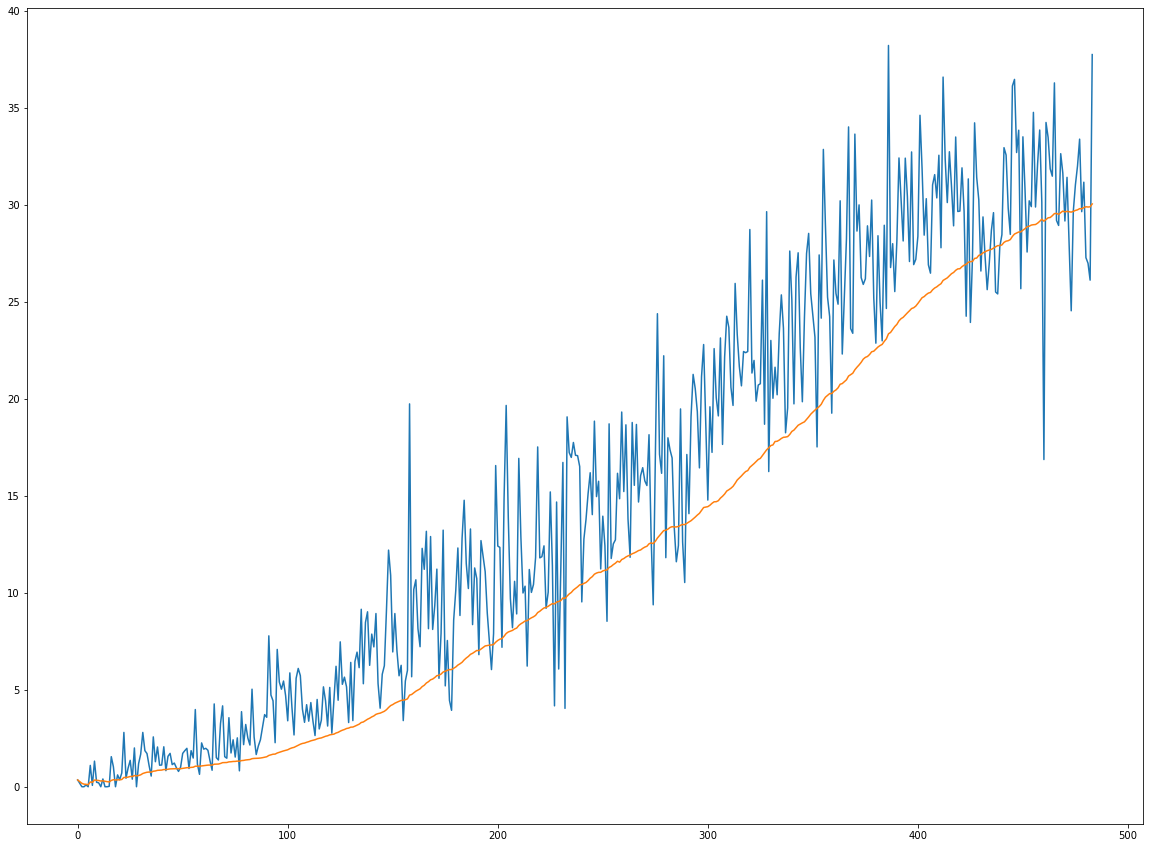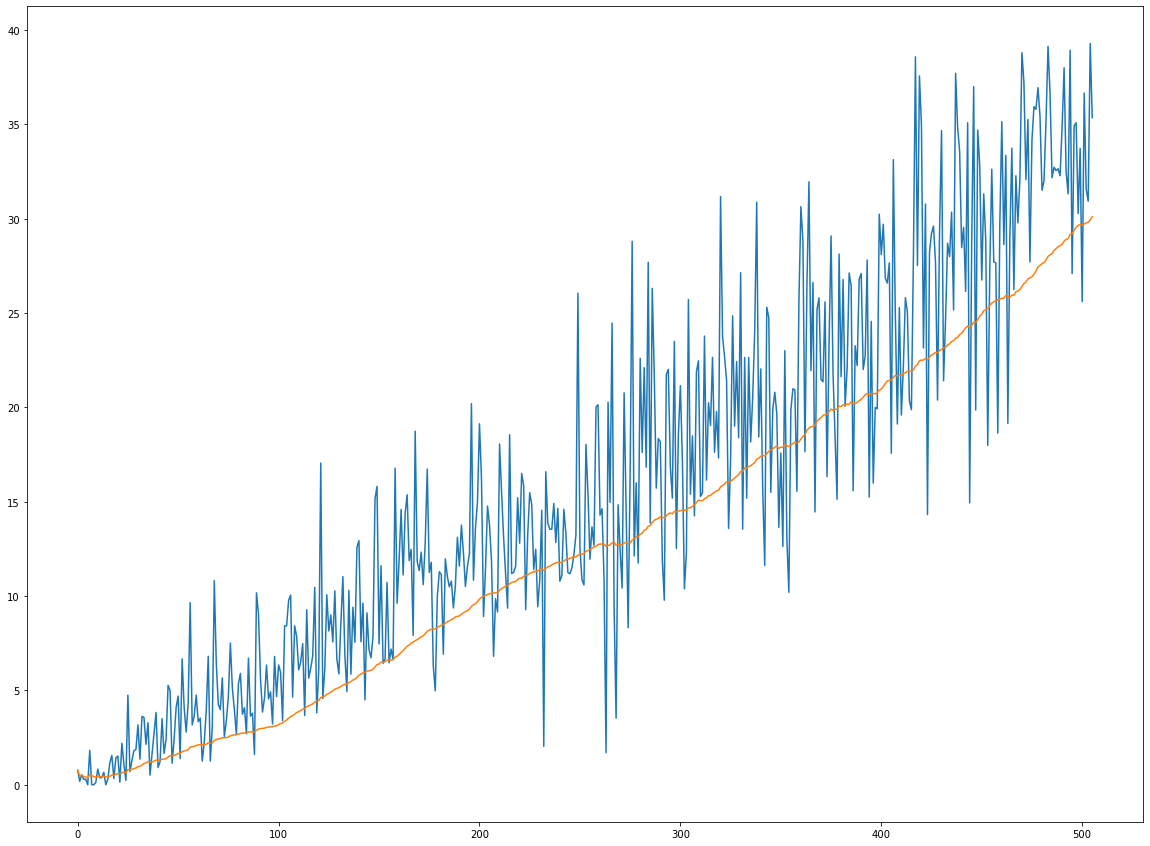Project 2 of Continuous Control from the Udacity's Nanodegree program with implementation of two versions of the DDPG algorithm (with uniform sampling and prioritised sampling of the replay buffer)
In the context of the Reacher environment, our agent is an arm with two joints that needs to move to different target locations, modelized by a round 3D Green ball rotating around the arm's extremity. The Reacher environment of the agent is highly similar to the one developed by Unity in the following sets of learning environment: Unity Reacher
To capture is knowledge of the environment, our agent has an observation space of size 33. Amongst all the variables making up this vector, we can count the position of the arm, its velocity (of the arm as a whole and of its angles), its rotation index and so on.
state = [ 0.00000000e+00 -4.00000000e+00 0.00000000e+00 1.00000000e+00
-0.00000000e+00 -0.00000000e+00 -4.37113883e-08 0.00000000e+00
0.00000000e+00 0.00000000e+00 0.00000000e+00 0.00000000e+00
0.00000000e+00 0.00000000e+00 -1.00000000e+01 0.00000000e+00
1.00000000e+00 -0.00000000e+00 -0.00000000e+00 -4.37113883e-08
0.00000000e+00 0.00000000e+00 0.00000000e+00 0.00000000e+00
0.00000000e+00 0.00000000e+00 5.75471878e+00 -1.00000000e+00
5.55726671e+00 0.00000000e+00 1.00000000e+00 0.00000000e+00
-1.68164849e-01]The reward of the agent is pretty straight forward: it is given +0.1 score for every time-step where the agent's hand is inside the ball. As no negative reward is given to the agent, its behaviour may not be physically-speaking ideal: any torque will not be penalised. However, such bad behaviour should always be taken into account when developing a RL agent for a concrete robot implementation. A more elaborate reward function could then be helpful to train a better agent, even if training would then be made harder.
To collect these rewards, our agent can move itself. These movement are represented as a vector of 4 values, with each value being between -1 and 1.
When training the agent, it is considered successful to the eyes of the assignment when it gathers a reward of +30 over 100 consecutive episodes.
Clone this GitHub repository, create a new conda environment and install all the required libraries using the frozen conda_requirements.txt file.
$ git clone https://github.com/dimartinot/P2-Continuous-Control.git
$ cd P2-Continuous-Control/
$ conda create --name drlnd --file conda_requirements.txtIf you would rather use pip rather than conda to install libraries, execute the following:
$ pip install -r requirements.txtIn this case, you may need to create your own environment (it is, at least, highly recommended).
Provided that you used the conda installation, your environment name should be drlnd. If not, use conda activate <your_env_name>
$ conda activate drlnd
$ jupyter notebookThis project is made of two main jupyter notebooks using classes spread in multiple Python file:
DDPG.ipynb: Training of the DDPG agent;Prioritised_DDPG.ipynb: Training of the prioritised DDPG agent.
ddpg_agent.py: Contains the class definition of the basic DPPG learning algorithm that uses soft update (for weight transfer between the local and target networks) as well as a uniformly distributed replay buffer and OUNoise to model the exploration/exploitation dilemma;model.py: Contains the PyTorch class definition of the Actor and the critic neural networks, used by their mutual target and local network's version;prioritized_ddpg_agent.py: Contains the class definition of the DDPG learning algorithm with prioritized replay buffer;
4 weight files are provided, two for each agent (critic + actor): as they implement the same model, they are interchangeable. However, as a different training process has been used, I found it interesting to compare the resulting behaviour of the agent:
actor_weights_simple_replay_buffer.pth&critic_weights_simple_replay_buffer.pth: these are the weights of a common ddpg agent using a uniformly distributed replay buffer.
actor_weights_prioritised_replay_buffer.pth&critic_weights_prioritised_replay_buffer.pth: these are the weights of an agent trained with experience tuple sampled using their importance in the learning process.


